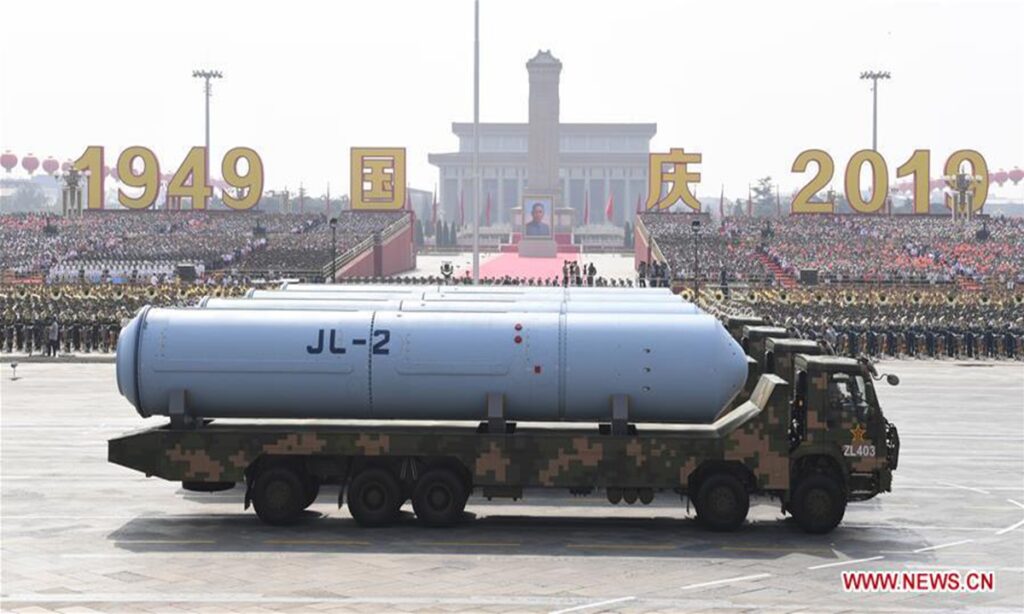The Financial Times (FT) quoted on Saturday several sources saying that “the Chinese military launched a rocket that carried a hypersonic glide vehicle” in August and judged it to be a “nuclear-capable hypersonic missile.” According to the FT article, the missile “flew through low-orbit space” and could help China “negate” US missile defense systems which are designed to target the fixed parabolic trajectory of a ballistic missile. The progress of the Chinese military has “caught US intelligence by surprise,” the report said.
The US generally has the ability to monitor global missile launches. If the FT report is to be believed, it means that there is a key new member in China’s nuclear deterrence system, which is a new blow to the US’ mentality of strategic superiority over China. According to the FT, the China Academy of Launch Vehicle Technology announced the 77th and 79th launches of the Long March 2C rocket, but there was no announcement of a 78th launch. The report believes the 78th “secret launch” may be to test the above-mentioned hypersonic missile.
The FT also reported that China has tested a new space capability with a hypersonic missile, citing sources. It said the missile missed its target by about more than 30 kilometers, yet the test showed that “China had made astounding progress on hypersonic weapons.” But if Chinese authorities do not voluntarily release such top defense secrets, others can only speculate based on technical monitoring methods.
It is meaningless to discuss the credibility of the FT report. But it is important to note the unstoppable trend that China is narrowing the gap with the US in some key military technologies as China is continuously developing its economic and technological strength. China doesn’t need to engage in an “arms race” with the US – it is capable of weakening the US’ overall advantages over China by developing military power at its own pace.
In the long term, the comparison between the military powers of China and the US will be in the following paradigm:The US’ overall military advantage will be maintained, while its air force and navy have higher quality and its global deployment and projection capabilities will be unmatched by China’s. Meanwhile, China won’t have any will to globally challenge the US’ dominant position in military sphere, and the US shouldn’t worry about losing its military hegemony.
However, China’s military buildup will focus on the Taiwan Straits and the South China Sea. It is inevitable that China will take an upper hand over the US military strength in these areas thanks to the geographical proximity and the continuous increase of China’s input. Chinese society has not only strong expectations for this, but also strong determination and corresponding ability to realize this reversal. The US’ conventional military superiority around the world will not translate into a guarantee of superiority in these regions.
The US is very concerned about China’s nuclear development. There is no doubt that China has no plans to build a nuclear force of the same size as that of the US. In other words, we have no intention of launching a “nuclear arms race” with the US. However, China will certainly improve the quality of its nuclear deterrence to ensure that the US completely eliminates the idea of nuclear blackmail against China at any critical moment and its idea of using nuclear forces to make up for the weakness that US’ conventional forces cannot crush China.
Greater survivability and penetration ability of Chinese nuclear missiles is clearly being accelerated through a variety of new missiles. Such development will ensure that neither country’s nuclear forces will be used as a tool to solve regional problems. This would ensure that the damage to peace, if any, would be limited and that the region would not see a deadly collision between major powers.
The US is constantly releasing rumors that China is strengthening its nuclear strategic tools, which is believed to pave the way for public opinion in the US to further increase its military expenditure from a high starting point. Perhaps we need to point out that no matter how much military spending the US increases and how much new equipment it procures, it is impossible for the US to continue enjoy overwhelming military superiority in China’s coastal areas. Washington needs to be realistic and rethink its approach to China.
The future strategic balance between China and the US cannot be achieved by carrying out an extreme “arms race.” The two sides need to rebuild a certain strategic mutual trust, which is the key to forming a security buffer zone between China and the US. Can’t major powers with different political systems cooperate with each other to achieve a win-win result? Must one overwhelm the other? As China and the US prepare for the worst, we must not give up. Both sides must explore a political and security framework that can accommodate the major long-term interests of both countries for the benefit of both countries and the world at large and never yield in that.




